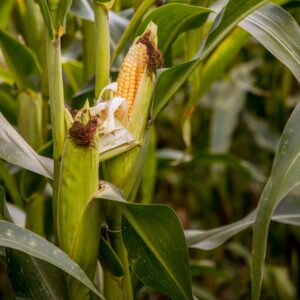
We began the two days at Rawdons Lodge in the KZN Midlands. After brunch (below) there were three presentations.
Hold on. The WWF SA and agriculture? They’re conservationists, aren’t they?
Sustainable Agriculture, championed by the WWF SA-Nedbank partnership, is similar to what others call Biological Farming or Natuurboerdery (Nature Farming). It is not as strict as organic farming (where the use of synthetic fertilizers, pesticides, herbicides and GMOs are prohibited) but it’s halfway there from conventional farming. Nedbank, in its turn, is contributing over ZAR17-million (around USD 1.5-million) to programmes like this over three years.
Limited availability of water, land and energy has placed agriculture/food security at a crossroads. And the health of our natural systems is deeply linked to all of this, explains Inge Kotze (senior manager of the Programme).
A water overview was given by Christine Colvin (WWF Freshwater Senior Manager), and out at John Campbell’s farm, Helen Gordon spoke of the Water Balance Programme. The clearing of invasive alien species is one of the vital water supply interventions identified in the 2004 National Water Resource Strategy and this was what we had come to see.
At Ivanhoe Farm we were moved out of buses to a convoy of bakkies (“light utility vans”, for our overseas readers). The farm lies at the beginnings of the Umgeni River Catchment area, which in its totality is responsible for a fifth of South Africa’s GDP. No wonder it is viewed as a catchment area of particular ecological and socio-economical importance!
We travelled on rough roads through beautifully green territory. Between the mist we saw wattle crane (an endangered species in this country) standing content on the far side of the some of the several hundred hectares of wetlands that exist on Ivanhoe. The major operations on the farm are potatoes and Brangus beef cattle, and there were perhaps sixty head of cattle where we disembarked. Some broke from the serious business of grazing to skip and fool around, perhaps because they saw the cameras. Just kidding. I don’t think they even knew we were there, they were so content under the Midlands skies.
The weather changed. It became increasingly difficult to hear the presentation for the rain which pelted us in the ears and face. We retired to the farm sheds where we heard more and had opportunity to ask questions.
“There are no rats here,” Campbell said proudly afterwards, and I looked up from the immaculate space around us to where he was motioning. Above us, owl boxes were interspersed at various points of the shed. We headed back to Rawdons in our vehicles for an hour or so’s leisure time before assembling for dinner at 19h00.
Find the pages on water, invasive alien species and birds (wattled crane and owls) in the The Agri Handbook.